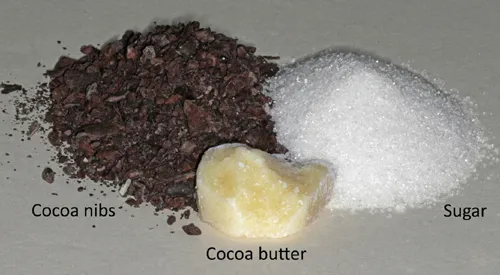
The Science of Chocolate
Stephen T Beckett
- 284 pagine
- English
- ePUB (disponibile sull'app)
- Disponibile su iOS e Android
The Science of Chocolate
Stephen T Beckett
Informazioni sul libro
The Science of Chocolate leads the reader to an understanding of the complete chocolate making process and includes the ways in which basic science plays a vital role in its manufacture, testing and consumption. Originally based upon a talk to encourage school children to study science, the book is now widely used within industry and academia.
The third edition of this international best seller has been fully revised and updated. The author has now included methods of sensory evaluation, designing and modifying chocolate flavour to suit the product and the history and manufacture of some well-known confectionery products. Fat, calorie and sugar reduction are also covered including a review of patents in this area. In addition, the section on why chocolate might be good for you has been updated to include some more recent research results. Three new experiments have been added, so there are now twenty of them, which use simple materials and apparatus to demonstrate the scientific and mathematical principles found in the rest of the book. Most are easily adapted to suit different student abilities.
This book will appeal to those with a fascination for chocolate and will be of specialist interest to those studying food sciences and working in the confectionery industry.
Extracts from reviews of 2 nd Edition:
"...I found this to be an interesting read, and I think the book would be useful to graduates thinking of a career in the food industry (and not just the chocolate industry specifically), to schoolteachers looking for some interesting experiments, and to lecturers (Chemistry, Biochemistry, Botany, Food science) looking for interesting facts to enliven their lectures."
Bioscience Education, Volume 12, 2008, E J Wood.
"...very well written and complete book for everyone who wants to learn more about chocolate and its production process."
Crystallography Reviews, Volume 15, 2009 – Issue 4, pages 275-277, Henk Schenk.
"The easy reading style of the book makes it valuable not only to school and university students, but also to those who are new to working with chocolate or those needing a good summary of chocolate science."
Chemistry World, for the Christmas Books
Domande frequenti
Informazioni
1.1 Chocolate as a Drink

(Reproduced from ref. 7 with permission from Springer Nature, Copyright 1965.)
1.2 Eating Chocolate

(Reproduced with permission of Dr P Ashby, Copyright 2017.)
Indice dei contenuti
- Cover
- Title Page
- Copyright Page
- Preface
- Contents
- Chapter 1 The History of Chocolate
- Chapter 2 Chocolate Ingredients
- Chapter 3 Cocoa Bean Processing
- Chapter 4 Liquid Chocolate Making
- Chapter 5 Controlling the Flow Properties of Liquid Chocolate
- Chapter 6 Crystallising the Fat in Chocolate
- Chapter 7 Standard Product Manufacturing Processes
- Chapter 8 Modifying Chocolate’s Eating Properties
- Chapter 9 How Do They Make That? (Some Distinctive Products)
- Chapter 10 Analytical Techniques
- Chapter 11 Legislation, Shelf Life and Packaging
- Chapter 12 Nutrition and Health
- Chapter 13 Experiments with Chocolate and Chocolate Products
- Glossary
- Subject Index